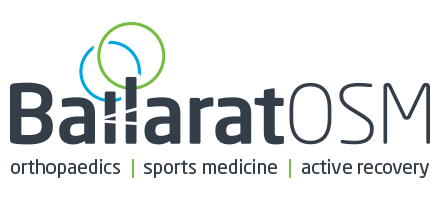
Tendon Repairs/Recessions/Reconstructions/Transfers & Injections
Orthopaedics and Sports Medicine deal with many tendon conditions, both with and without surgery. The non operative group includes tendinopathies (e.g. tennis elbow, non insertional achilles tendonitis, jumpers knee) that often settle with rest/blood or PRP injections. and a retraining program. The impingement tendon conditions include shoulder “bursitis”, intersection syndrome above the wrist, deQuervain’s at the wrist, even trigger finger, might be treated initially with a steroid injection and rest. Gluteal tendinopathy (trochanteric bursitis) may be a combination of the two pathologies. In the first instance all of these are treated non operatively, but there are surgical solutions where our sports medicine colleagues can’t get on top of it.
Tendon ruptured might be treated non operative (biceps at the shoulder, rotator cuff tears in the low demand patients, small gluteal tears at the hip, even achilles ruptures can be treated non operatively in some). There is no doubt however that large, important tendons should be repaired. Examples of this include distal biceps at the elbow, pectoralis major, unbalanced rotator cuff tears, quadriceps tendon, and patella tendon all do badly with non operative treatment. The hamstring origin tear off the pelvis – if complete & well distracted, are best treated urgently. Tibialis anterior ruptures and achilles we prefer to operate as a rule, depending on patient co-moribidites (smoking and diabetes do not go well with foot and ankle surgery). Tendon repairs are pretty good at three months, and can usually tolerate forceful impacts again at six months.
Tendon recessions in children are most common in spasticity conditions – and sometimes botox injections is sufficient. In the instance of club foot casting, perhaps 10-20% of children will need the achilles tendon lengthened to achieve a good result – this in Ballarat is taken care of through the public sector. In adults tendon recessions are most commonly required is where a tight calf muscle contributes to an overload condition of the foot. This might be part of a diabetic charcot foot, but just as commonly in normal people. The common operative sites are either behind the knee (gastrocnemius proximal release (GPR) or lower calf – the Streyer procedure.
Our most commonly reconstructed tendon is tibialis posterior which causes adult acquired flat foot. This requires multiple issues to be addressed – the heel bone (calcaneum) needs to be moved to take the tendon off the tendon, either FHL or FDP is used to to reinforce the repair of the ruptured tendon, and the stretched spring ligament needs to be brought back to a normal length. This is surgery that typically requires six weeks in plaster, and another six weeks in a cam boot, and even then, an orthosis (“orthotic”) in the shoe will probably be required. If the tendon is too far gone and the joint has been damaged, the a hind foot fusion (triple arthrodesis most commonly) is required. Other tendon reconstructions we have done at late stages include neglected biceps tendon at the elbow.
Tendon transfers are very much on a case by case basis. Perhaps the most common is for thumb weakness after a wrist fracture, where a tendon to the index finger can be used to restore thumb function. It is perhaps a perfect transfer as it respects all the rules of transfer. In the lower limb, the tibialis posterior tendon can be converted to an ankle dorsiflexor in patients with a foot drop, or transferred to overcome a spastic force which no longer can be adequately braced. This tendon transfer does not adhere to all the rules, and rarely achieves full dorsiflexion power. Other tendon transfers performed for upper limb nerve injuries are interesting, but rare.
